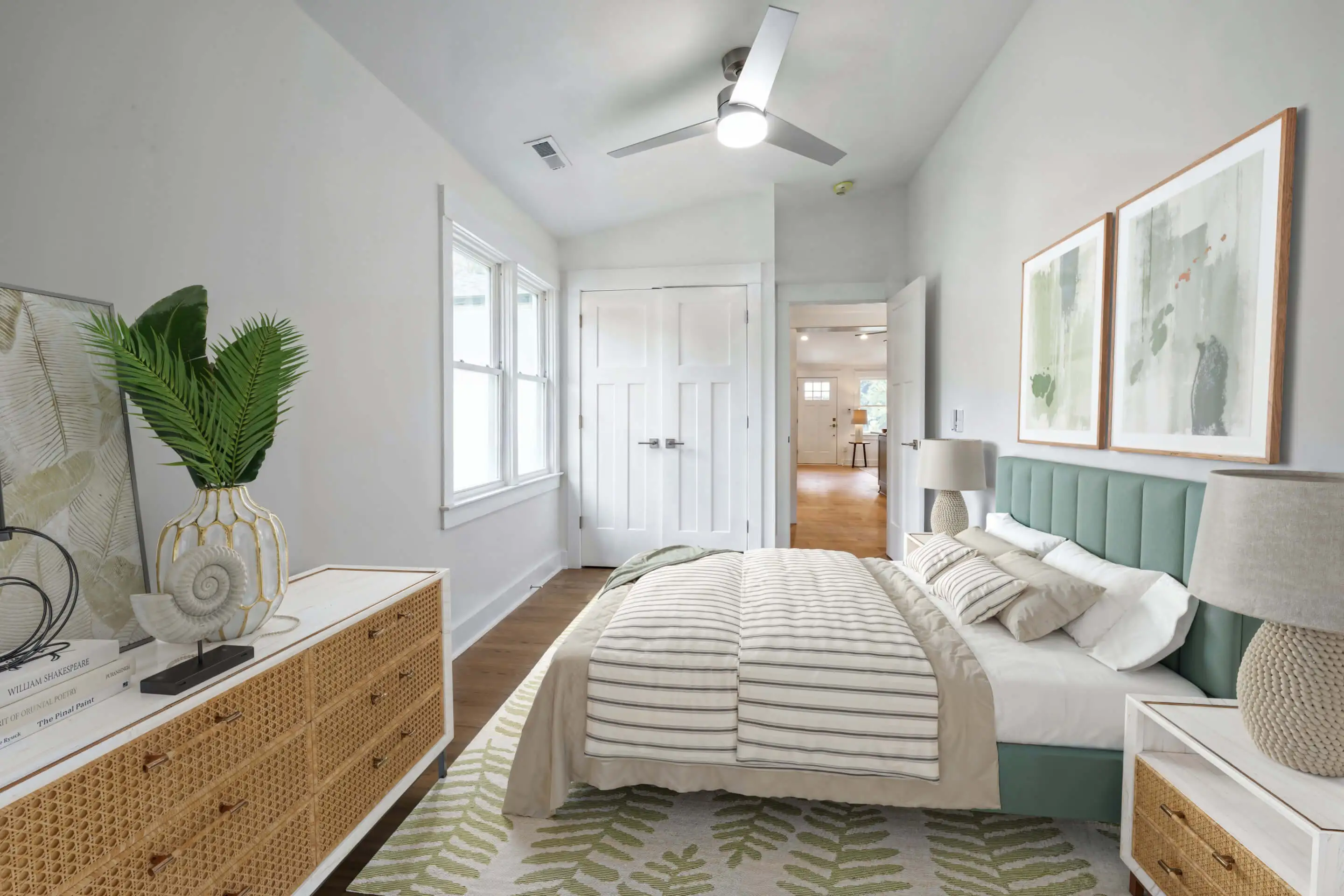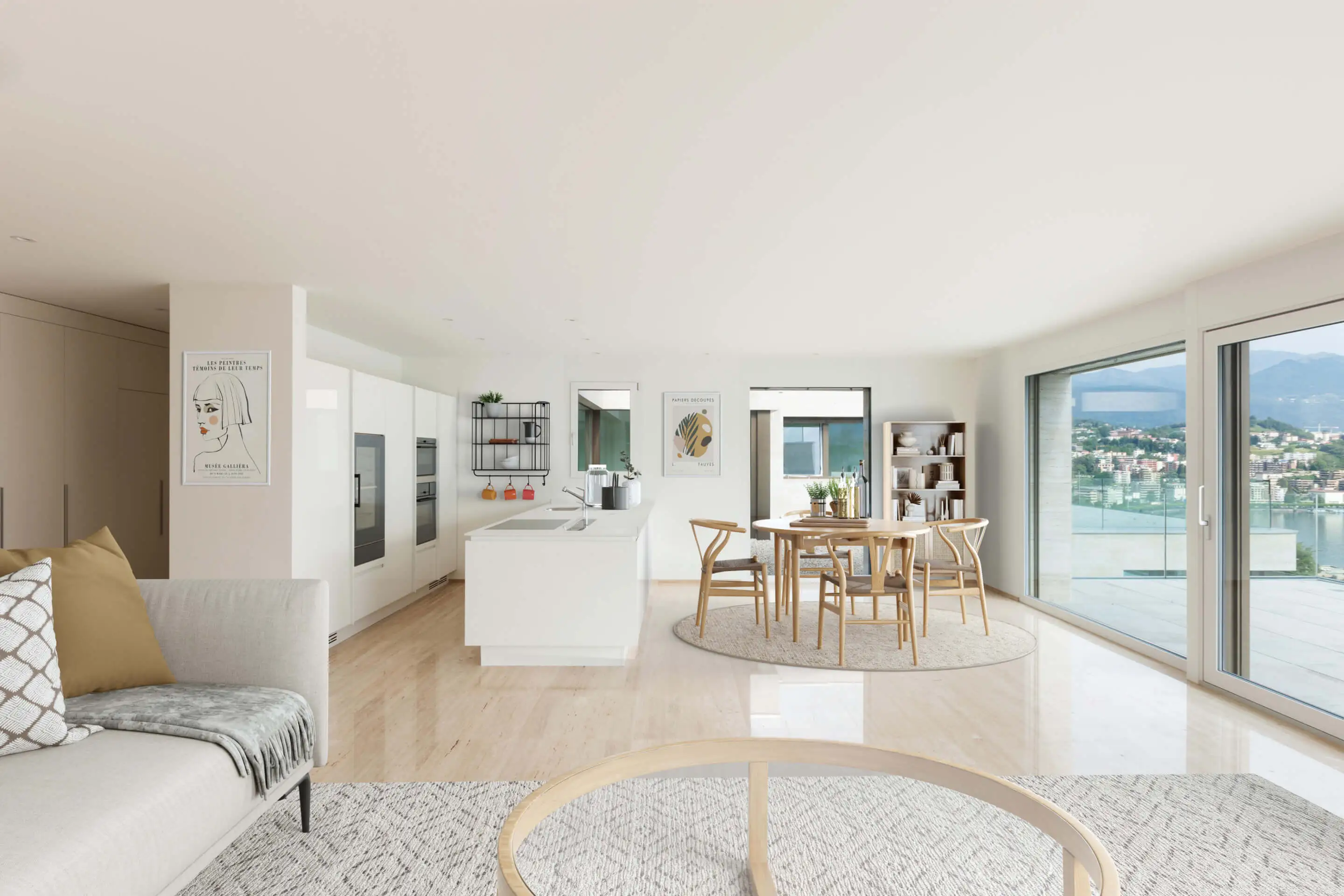Staging has always been one of the most effective ways to sell a property. But traditional staging—renting furniture, hiring movers, and scheduling designers—can take weeks and cost thousands. That’s where virtual staging comes in. By transforming listing photos into beautifully furnished rooms, platforms like ApplyDesign.io make staging faster, easier, and dramatically more affordable.
Here are five reasons real estate professionals are choosing virtual staging over traditional methods, and how ApplyDesign.io helps you do it better.
Physical staging for a three-bedroom home often runs $2,000–$5,000. If the home doesn’t sell quickly, monthly rental fees stack up. Add labor, insurance, and transportation, and costs can spiral even higher.
With ApplyDesign.io, staging costs drop by more than 90%. Instead of moving furniture, you upload photos and select styles. At just a fraction of the cost per room, you can stage an entire home for less than one room of physical staging.
Traditional staging means coordinating movers, waiting on deliveries, and blocking off time for setup. That can delay a listing by days or weeks.
With ApplyDesign.io, you can upload photos and generate staged rooms in minutes. Homes can be listed almost immediately, helping agents take advantage of peak timing and sell before competitors hit the market.
A warehouse only has so many couches. Virtual staging has no such limits. With ApplyDesign.io, you can instantly switch between modern, Scandinavian, farmhouse, luxury, or minimalist styles.
This flexibility helps you target specific buyer demographics. A city loft can be staged with sleek, modern furniture, while a suburban home might benefit from a cozy, transitional look. The ability to tailor staging style makes every listing more appealing.
If you manage more than one property, physical staging becomes unmanageable. Costs and logistics multiply quickly.
Virtual staging with ApplyDesign.io makes it simple to stage multiple homes at once. Whether you’re an agent handling several listings or a developer marketing new units, you can scale staging consistently across your portfolio without blowing the budget.
Staged images do more than make a home look nice—they create content that sells. Before-and-after photos perform well on social media. Email campaigns with staged images see higher engagement. MLS listings with staged visuals get more clicks and showings.
ApplyDesign.io makes it easy to generate polished, consistent images that strengthen your brand and drive more buyer interest. Agents use them for brochures, Instagram reels, and digital ads—transforming plain listings into compelling marketing campaigns.
Traditional staging still works in some cases, but it’s expensive, slow, and difficult to scale. Virtual staging offers clear advantages in cost, speed, flexibility, scalability, and marketing power.
That’s why agents and sellers are choosing ApplyDesign.io. With an easy-to-use platform, fast turnaround, and stunning results, ApplyDesign.io helps you stage smarter, sell faster, and keep more money in your pocket.
Ready to transform your next listing? Start staging with ApplyDesign.io today.




